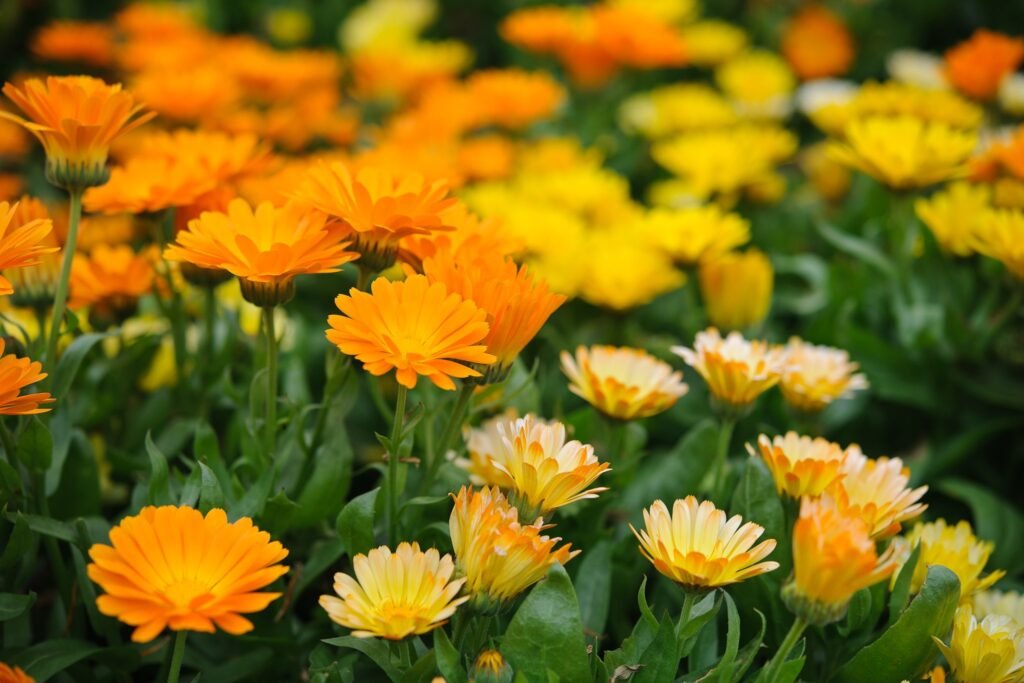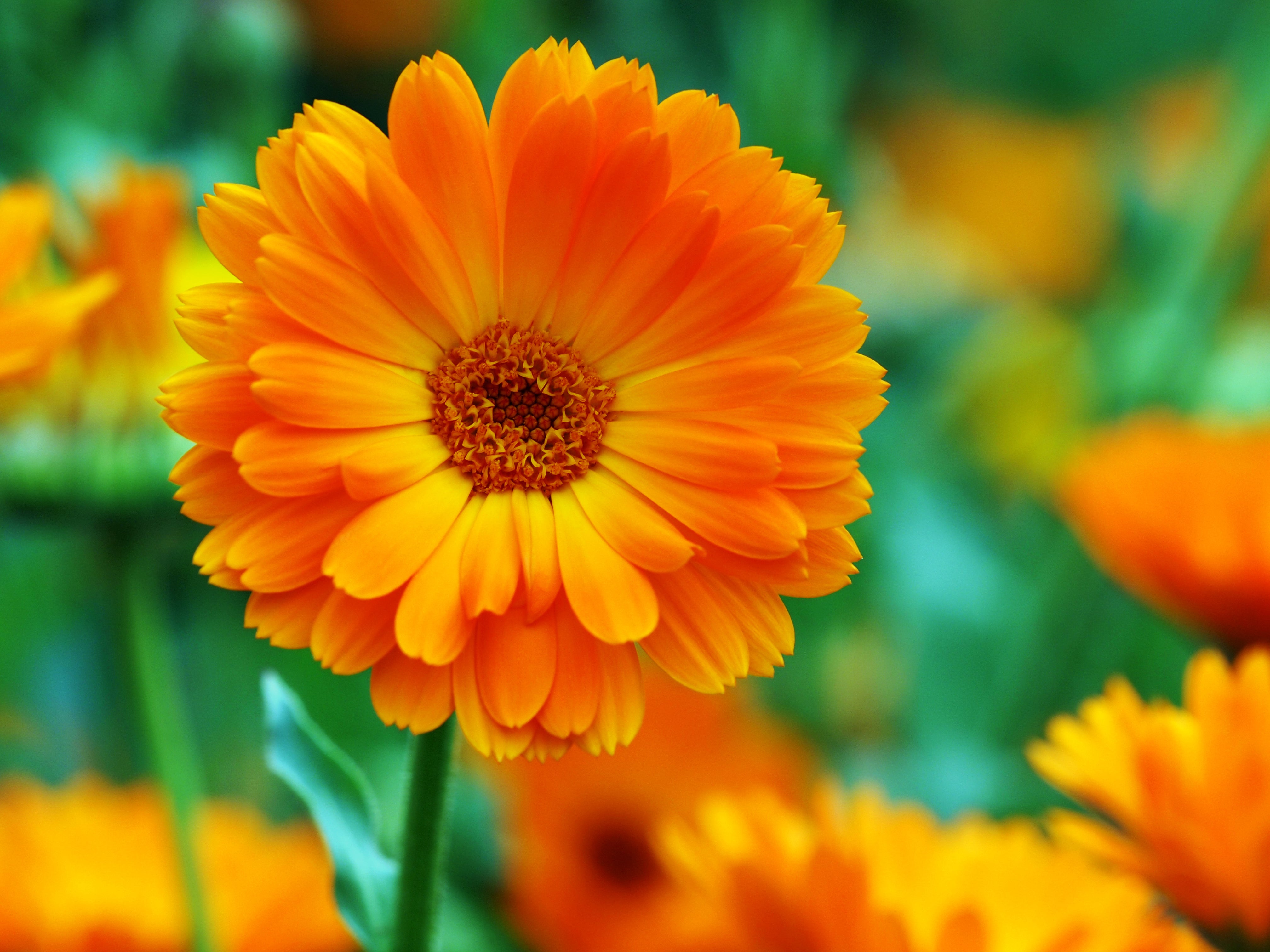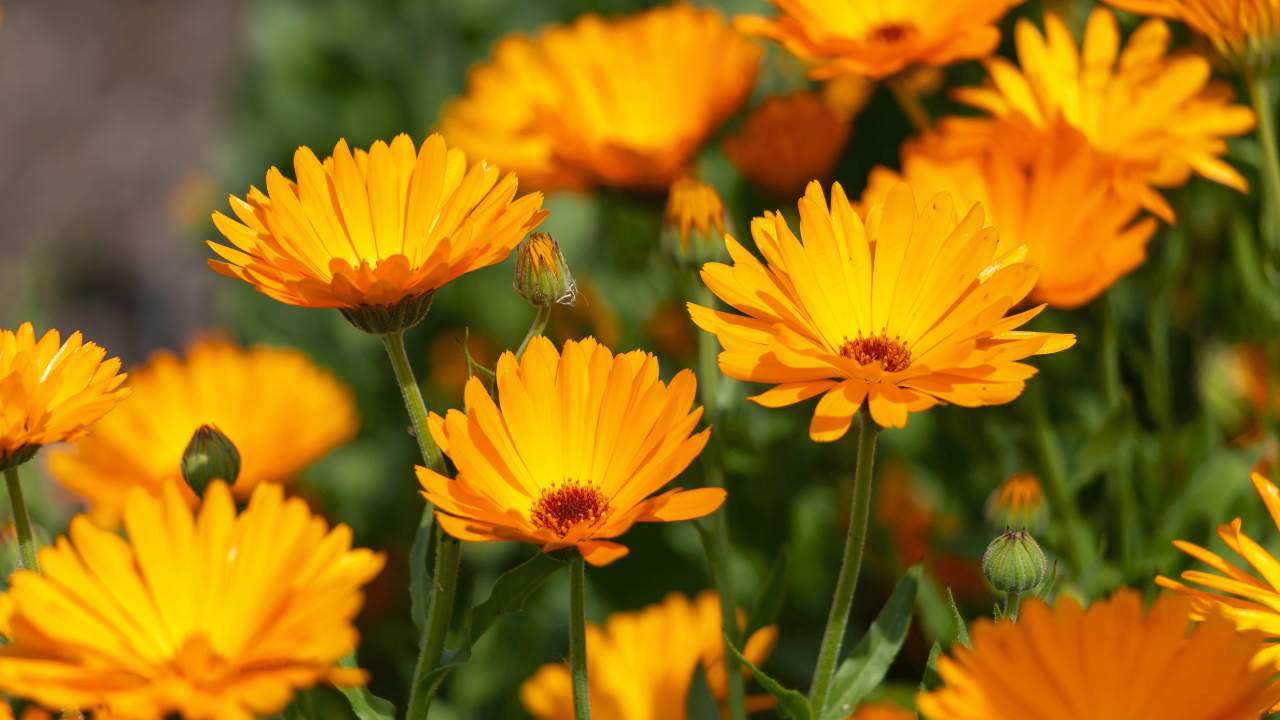
🌼 How to Grow Calendula from Seed
A Beautiful, Easy-to-Grow Flower with Healing Powers and Garden Benefits
Calendula, also known as pot marigold, is one of the most rewarding flowers you can grow from seed. Not only does it bring a bright, sunny glow to any garden space, but it’s also edible, medicinal, and a magnet for pollinators. Best of all? It’s low-maintenance, grows quickly, and thrives in even modest soil conditions.
:max_bytes(150000):strip_icc()/growing-and-using-calendula-1402626-26-f3f6f07fcc594a79b1a792f863a4a8e6.jpg)
If you’re dreaming of cheerful blooms that do more than just look good, this complete guide will walk you through how to grow calendula from seed—from prepping your soil to harvesting petals for tea, salves, or kitchen use. Whether you’re new to gardening or just adding to your pollinator patch, growing calendula is a garden decision you won’t regret.
🌱 Why Grow Calendula?
Calendula (Calendula officinalis) is a cool-season annual or short-lived perennial that flowers profusely and often self-seeds, returning year after year with minimal effort.
Top reasons to grow calendula:
- 🌼 Beautiful blooms in yellow, orange, peach, and cream
- 🐝 Attracts pollinators like bees, butterflies, and hoverflies
- 🌿 Medicinal properties: anti-inflammatory, healing, skin-soothing
- 🥗 Edible petals: toss into salads, decorate cakes, or brew tea
- 🐛 Natural pest repellent in vegetable gardens
- 🧴 Used in DIY salves, soaps, and creams
📅 When to Plant Calendula
Calendula prefers cooler weather, so timing your planting is key for strong growth and long bloom cycles.
Best times to sow:
- Spring planting: 2–4 weeks before your last expected frost
- Fall planting: In mild winter regions, sow in early fall for winter or early spring blooms
🌡️ Optimal germination temperature: 60–70°F (15–21°C)
Calendula will slow or stop blooming during hot summer months but bounce back in fall.
🧾 What You’ll Need to Grow Calendula from Seed
Here’s what you’ll want to gather before getting started:
- Calendula seeds (heirloom or organic if possible)
- Garden bed, containers, or raised beds
- Light, well-draining soil
- Compost or aged organic matter
- Watering can or gentle hose nozzle
- Mulch (straw, shredded leaves, or grass clippings)
Optional:
- Seed trays (if starting indoors)
- Grow lights (for early starts)
🪴 Step-by-Step: How to Grow Calendula from Seed

1. Pick Your Planting Spot
Calendula is super flexible. You can grow it in:
- Traditional garden beds
- Herb borders or pollinator strips
- Raised beds or vegetable patches
- Containers on a balcony or porch
Make sure your spot gets full sun to part shade. Full sun encourages prolific blooms, but some shade is helpful in hot climates.
2. Prepare the Soil
Calendula isn’t fussy—but it loves well-drained, slightly rich soil.
- Loosen the top 6–8 inches of soil with a fork or shovel
- Remove rocks or debris to ensure healthy root growth
- Mix in compost to add nutrients and improve texture
pH range: 6.0 to 7.0 is ideal, but calendula is tolerant of a wide range.
3. Sow Your Seeds
Calendula seeds are large and crescent-shaped—very easy to handle!
- Direct sowing: Sprinkle seeds ¼–½ inch deep, spacing them 6–12 inches apart
- Start indoors: Sow 6 weeks before last frost in trays with a light seed-starting mix
Water gently after sowing and keep soil evenly moist (but not soggy) until seedlings appear—usually in 7–14 days.
Optional: Thin seedlings to 8–10 inches apart once they’re a few inches tall to allow airflow and bushy growth.
4. Keep Calendula Happy as It Grows
Once seedlings are established, calendula practically grows itself. But a little care goes a long way!
☀️ Light
- Needs at least 6 hours of sun daily
- Partial shade is okay, especially in hot climates
💧 Water
- Water deeply once or twice a week
- Let the soil dry slightly between waterings
- Overwatering can lead to mildew or root rot
🌿 Fertilizer
- Doesn’t need much!
- A light compost top-dressing mid-season is enough
🍂 Mulch
- Helps retain moisture and suppress weeds
- Use organic mulch like straw or shredded leaves
5. Deadhead for More Blooms

To encourage calendula to keep blooming:
- Pinch or snip off dead flowers regularly
- This prevents seed formation and encourages new buds
Want it to self-seed for next year? Leave a few flowers to go to seed at the end of the season.
6. Harvesting Calendula Flowers
Once blooms are fully open, you can start harvesting.
How to harvest:
- Snip flower heads in the morning, after the dew has dried
- Pick every 2–3 days to keep blooms coming
How to dry:
- Spread flowers out in a single layer in a warm, dry spot
- Once fully dried, store in an airtight jar away from light
🌼 Dry petals can be used for calming teas, skincare salves, bath bombs, or even homemade lotion bars.
🐛 Common Calendula Problems (and Easy Fixes)
| Issue | Symptoms | Solution |
|---|---|---|
| Powdery mildew | White film on leaves | Improve airflow, avoid overhead watering |
| Aphids | Sticky residue, curled leaves | Spray with water or neem oil |
| Poor blooming | Few or no flowers | Needs more sun or deadheading |
| Floppy stems | Stems lean or collapse | Stake or plant in clusters |
Calendula is generally pest-resistant, but keeping it clean and dry helps prevent disease.
🌼 Companion Planting With Calendula

Calendula isn’t just pretty—it’s also a great team player in the garden!
Good companions:
- Tomatoes
- Beans
- Lettuce
- Cabbage
- Carrots
- Cucumbers
Calendula attracts beneficial insects (like ladybugs and lacewings) that help control pests naturally. It also repels aphids and whiteflies—bonus!
Table of Contents
❓ Frequently Asked Questions About Calendula
Q: Can calendula grow in pots?
Yes! Calendula grows wonderfully in containers. Choose a pot at least 8–10 inches deep, with good drainage. Make sure it gets plenty of sun.
Q: Is calendula the same as marigold?
Not exactly. Calendula is often called “pot marigold,” but it’s different from Tagetes marigold (the bright annual often used in Mexican traditions). They’re from different plant families.
Q: Is calendula edible?
Yes! Calendula petals are edible and mildly peppery. Use them in:
- Salads
- Soups
- Baked goods
- Herbal teas
Only use untreated, organically grown calendula for food or skincare.
Q: Will calendula reseed itself?
Absolutely. If you let a few blooms go to seed, calendula will self-sow and return in the next season, especially in mild climates.
Q: How long does calendula take to grow?
From seed to flower, calendula usually takes 6–8 weeks. It blooms over a long period—especially with regular deadheading.
✅ Conclusion: Calendula is the Flower You Didn’t Know You Needed
Calendula isn’t just another pretty flower. It’s a healer, pollinator magnet, kitchen helper, and soil friend—all rolled into one bright, happy bloom.
It’s one of those rare plants that checks every box: easy to grow, beneficial for your garden, versatile in its use, and beautiful to look at. Whether you’re growing in a backyard bed or a tiny balcony pot, calendula is a must-have addition to your garden.
And once you’ve experienced harvesting your own calendula petals for tea, drying flowers for skincare, or simply admiring a garden filled with cheerful golden blooms, you’ll understand exactly why gardeners fall in love with this humble yet magical flower.
So grab some seeds, find a sunny patch of soil, and let the calendula joy begin. 🌼💛
🧾 Calendula Growing Cheat Sheet
| Step | Details |
|---|---|
| Best Time to Plant | Early spring or fall (in mild climates) |
| Germination Time | 7–14 days |
| Light Requirement | Full sun (6+ hours); part shade in hot areas |
| Soil Preference | Well-drained, slightly fertile |
| Watering Needs | Moderate; let soil dry between waterings |
| Spacing | 8–12 inches apart |
| Days to Bloom | 45–60 days after planting |
| Container-Friendly? | Yes, with good drainage |
| Pest Resistance | High; attracts pollinators, repels aphids |
| Harvesting Time | Once flowers are fully open |
| Blooming Season | Spring to early summer; fall in cool climates |
